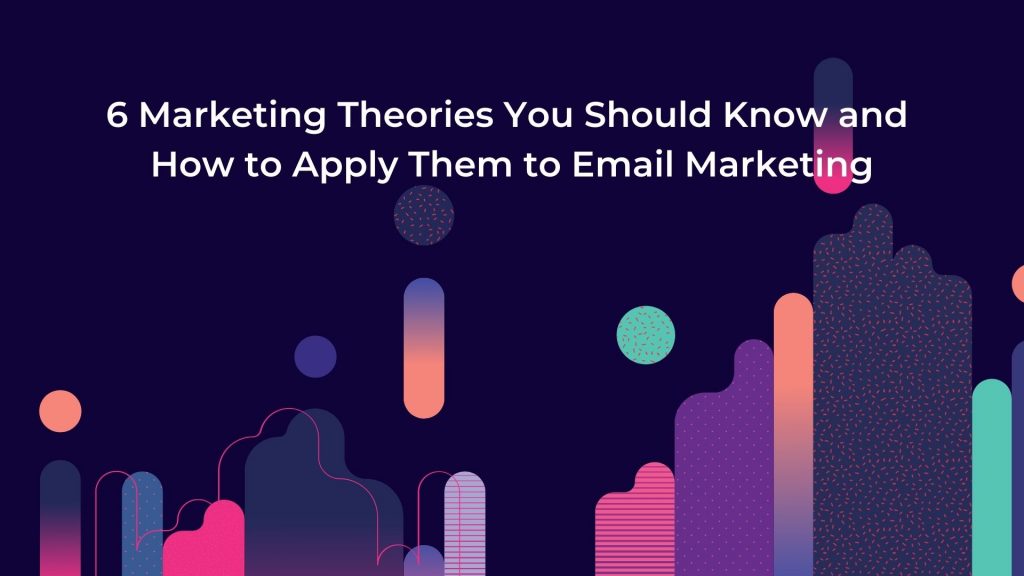
Email marketing is crucial to the success of your business. It is still one of the most effective forms of marketing there is, and you’ll need to implement proven email marketing strategies if you want to reach your business goals.
But implementing winning email marketing strategies requires knowledge of marketing theories. These theories are the foundation of every decision smart marketers make. To help you, I’ve compiled the most important ones you need to know. We’ll also look at how each theory is applied in particular to email marketing.
What is Email Marketing?
Email marketing is the use of email to promote your business and sell your products or services. Most businesses build their email marketing list through an opt-in form on their website. Some also use direct prospecting.
Since your goal is to turn leads into prospects and prospects into customers, you’ll need high-quality email copy that converts. That requires an understanding of the psychology of consumers and their wants and needs. If you don’t understand your target audience and how they behave, you can’t craft messages that will prompt them to take your desired action.
6 Marketing Theories You Should Know
Marketing theories cover all you need to know about consumer behavior. The theories are anchored in psychological principles that have been tried and tested as they relate to marketing. In other words, good marketers know that marketing is not just about having a website that follows the latest web design trends. It requires an understanding of their customers – and their needs, goals, and motivations – to be effective.
The goal in this section is for you to understand these six key marketing theories so you can understand your target audience and improve your marketing efforts. This will allow you to approach an email marketing campaign the right way and gain those coveted conversions.
1. Maslow’s Hierarchy of Needs
Abraham Maslow’s Hierarchy of Needs is a psychological theory. It posits that in order to reach self-actualization or one’s full potential, humans must satisfy their needs at each level in the “hierarchy of needs”. Here’s how it looks:
Source: Simply Psychology
This theory is often cited in marketing classes because it describes the needs marketers should keep in mind as they develop strategies to get consumers to make a purchase.
For an email marketing campaign to be effective, marketers should understand that particular need they are trying to fulfill. According to Maslow, there are five of these: physiological needs, safety needs, belongingness and love needs, esteem needs, and self-actualization needs. Your email marketing campaign should focus on one category and aim to target that need.
For instance, if you’re appealing to safety with your campaign, your copy would aim to reassure your subscribers they can safely transact with you. If your campaign aims to fulfill belongingness and love needs, you would use words that connote belonging such as “together” and “us” in your copy. Many brands have adopted this latter strategy in the wake of the Coronavirus crisis in an attempt to show their audience that the brand cares and is there for them. Emails as much as other e-content require proper intent keywords, and LSI keyword generators can help your emails stay diverse and still hit the target.
2. Consistency Theory
Humans generally love consistency. That means we want our values, beliefs, and attitudes to support each other. We shun uncertainty because it gives us discomfort. When something is out of place, we desire to regain that balance and a sense of comfort again.
Email marketers can take advantage of this principle by writing emails based on consumers’ desire to fit in. In other words, you need to present a great offer and then generate that fear of missing out (FOMO). You can do this by showing the stock levels of a product to emphasize scarcity or by using a timer to show that a sale is about to end. You can also give a deadline for the offer.
Here’s a good example from Forever21, a clothing retailer:
If you generate FOMO, you increase your chances of getting prospects to take action because the assumption is they all want to fit in and don’t want to miss out on a great deal.
3. Elaboration Likelihood Model
This theory states that there are two major routes to persuasion:
The first is the central route, where individuals carefully weigh their options before arriving at a decision. The other is the peripheral route, which people take when they make a decision based on their association of positive or negative cues with the stimulus. So here, the attractiveness of the source of the message becomes key.
Email marketers can ensure that their emails appeal to as broad an audience as possible by keeping both types of decision-makers in mind when they craft their campaigns. By selling high-quality products that provide value for money, along with enticing discounts and deals, they appeal to central decision-makers.
Source: eBay marketing email
By making sure their marketing emails look good, they also appeal to peripheral decision-makers. The idea is to get people to make a purchase by making them see that the products you’re selling are really worth it (the central route) and that you as a seller look credible (a peripheral route).
4. Reciprocity Theory
The reciprocity theory is one of the laws of social psychology. Like the other theories I’ve mentioned here, it is often cited in marketing classes because it helps marketers craft effective messages that prompt action. The theory says this: When people receive something good from someone, they are likely to repay the kindness.
Effective email marketers take this principle into account. If they want consumers to make a purchase, they understand they must offer value. That value can be in the form of discounts and promo codes. Since marketers want their customers to read their marketing emails on a consistent basis, they don’t just attempt to sell, sell, and sell in each email. They can also offer value in the form of content like a free ebook, whitepaper, infographic, or anything else the prospect might want to use.
Zest (pictured above) provides its email subscribers a digest of free content it believes will help them. Remember: always focus on offering value before you try to make a sale.
5. Analysis Paralysis Theory
This theory posits that when a person is faced with too many choices, they end up not making any decision at all. According to psychologist Barry Schwartz, this is the “paradox of choice”. Although an increased number of choices seems as though it would allow people to achieve better results, it instead results in anxiety and indecision arising from the fear of making a mistake, and therefore lack of action.
Source: Doist
Effective email marketers, then, do not put too many conflicting messages or calls to action in one email to avoid choice paralysis. Each email also has just one goal. This is reflected in a call to action in the email. The CTA must be short, simple, and concise so as not to confuse the prospect.
Here’s an example from Brooklinen:
In this email, Brooklinen provides prospects with a single option: shop. The message is focused and the CTA is clear.
6. Mere-Exposure Effect
The mere-exposure effect states that the more people are exposed to something, the more they develop a preference for it. This is why the more people are exposed to other people, the more likely they are to become comfortable with and develop a good relationship with them.
In email marketing, the theory holds true as well. Companies that are consistent in sending marketing emails develop a better relationship with prospects (assuming, of course, the emails are written properly). This is also why you need to promote your website, not just to as many people as you can, but to the same people regularly too. The more often people are exposed to your brand, the more likely they are to remember it. So when the time comes they need to make a purchase, they will think of you first, and not one of your competitors.
This is not to say, however, that you should flood your prospects with marketing emails or reminders all the time. Strike a balance. You want them to remember you, but you don’t want them to be annoyed by you either. One to two emails per week is about right for most companies.

Wrapping Up
If brands want to succeed, they must prioritize email marketing. But good email marketing requires careful thought and planning: messages should be composed in such a way they will prompt prospects to take the desired action.
For this to happen, email marketers should have a deep understanding of their target audience. This is where marketing theories come in. The theories explain how people, the consumers, think and act. They provide an explanation for how consumers behave, their needs, desires, and behaviors.
To be an effective email marketer, then, you need to develop a strong understanding of these theories. Use them to strategize and craft your campaign. Use email automation to save yourself time and ensure you never miss an opportunity for a timely follow-up. If you do this, I can assure you you will meet your marketing goals. Your company will be well on its way to success.
Bio
Ian Loew is a web entrepreneur and inbound marketing expert, and the Owner and Creative Director of Lform Design. After four years of helping Fortune 500 companies with MGT Design, Ian embarked on his freelance career before establishing Lform Design in 2005. He leads a team of creative professionals to deliver inspired online experiences via modern, responsive websites that reflect his clients’ core values. When not at the helm, Ian can be found mountain biking with friends or spending time with his family.
 The Autoklose
The Autoklose 


Leave a Reply
You must be logged in to post a comment.